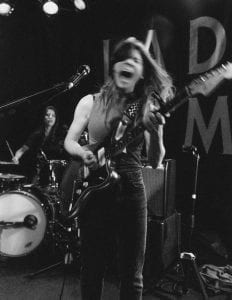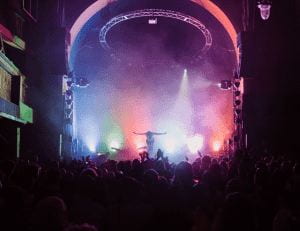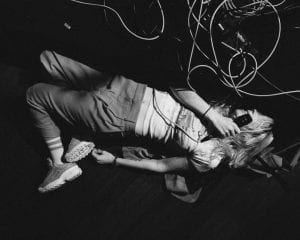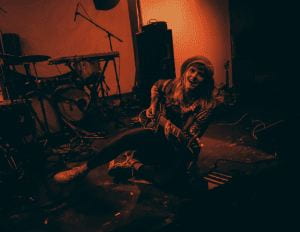By: Amanda Nurse, Editor-in-Chief
As many staffers would concur, the literary magazines at Penn State are a jumping off point to finding a place in the creative world and lead to many new and exciting things. Erin Allport was a member of the Kalliope literary staff from 2014 to 2016, holding the position of nonfiction editor and production coordinator in her senior year, and she credits Kalliope with helping her grow and land her a job!
Erin graduated from Penn State University Park in 2016 with her Bachelor of the Arts in English. Nowadays, she works full-time in fundraising at the Carnegie Museum of Natural History in Pittsburgh and part-time as a freelance photographer, but she still includes her time at Kalliope as a big part of shaping her future.
Erin Allport
I conducted a short interview with Erin over email, reminiscing about her time on the Kalliope staff, inquiring about her freelance work, and gathering advice for upcoming graduates.
Amanda Nurse: In your last year at Penn State, you served as nonfiction editor and production manager for Kalliope. Are you a writer as well as photographer? Did your work on Kalliope influence your path after graduation?
Erin Allport: You know, it’s funny. I originally joined Kalliope because yes, I was a writer, and I wanted to surround myself with other writers and creative people. But over the course of two years on the magazine staff, my creative interests shifted more toward the visual realm to things like photography and design. I resisted that at first—so much of my identity at the time was tied up in being a writer—but over time I learned not to limit myself creatively and that shifting gears is sometimes necessary to stave off burnout. I still consider myself a writer, even though it’s something I do less of nowadays. I know it will always be there when I need it, which is a comforting thought.
As for my path after graduation, I’m convinced that my work on Kalliope is what landed me my first job. I brought a copy of the magazine to my interview, and it earned a permanent spot on my future boss’s bookshelf. I’m still immensely proud of the work we put into that project, 4 AM nights in the library and all.
Rubblebucket at Rex Theater
AN: How did you become interested in photography?
EA: I’ve always had an interest in it, but I never did much more than dabble until after I graduated college. Spring semester of my senior year, I brought a disposable camera with me on a backpacking trip, and looking back now I’d say that was the real turning point—the joy I felt when I got those photos back stuck with me for months afterward. Later that year, I bought a camera as a Christmas gift to myself, learned the basics through library books and online classes, and I’ve been shooting ever since.
AN: Do you have any photography inspirations?
EA:Instagram is a huge source of inspiration, honestly. There’s a great community of artists there, particularly when it comes to live music and music portraiture. Ebru Yildiz, Hollie Fernando, CJ Harvey, and Kayhl Cooper are a few names that come to mind, but I also really love the atmospheric work of photographers like Patrick Joust and Todd Hido.
Outside of music, I tend to watch a lot of street photography vlogs on YouTube. Watching someone else go out and shoot almost always makes me want to pick up my camera too.
Lady Lamb at Club Cafe
AN: What would you say is the best part of working as a freelance photographer? Is there a reason you chose to only do that on the side of a full time position?
EA: I tend to be somewhat precious about my photography. It’s something I do for the joy of it, and I’m not willing to risk losing that to the pressure of a steady paycheck. With freelancing, I can pick and choose jobs that I’m genuinely interested in without having to rely on it as my main source of income. It’s the ideal side job.
AN: I noticed your work with the Pittsburgh City Paper is all concert photographs. What drew you to photographing concerts/musicians?
EA: Music and photography are the two things I love most in this world, so the realization that I could marry the two was very much a “EUREKA!” moment. As someone who (tragically) is without a single musical bone in my body, concert photography gives me a way to participate that was never accessible to me previously. My best work comes from shooting live music because my heart is one hundred percent in it.
AN: With COVID, there are no concerts or other large events. How has that affected your freelance work? Have you started to do other things by way of photography?
EA: I’m extremely fortunate to have remained employed at my museum job throughout the pandemic, which has kept me afloat despite the lack of freelance work. I’ll be honest: staying creative through COVID has been hard. I’ve still shot personal work here and there, but mostly I’m just trying to get through it like everyone else. We’re living through a literal once-in-a-lifetime pandemic, it’s okay to be less productive.
Caroline Rose at Club Cafe
AN: Do you have any advice for current students at Penn State who are looking to enter some sort of creative/arts field? What about advice for people who might even want to work freelance?
EA: Don’t be afraid to explore your interests! Freelance is a great way to test the waters to see if you want to commit to something full time. Creativity comes in many forms, and I’ve learned that, more often than not, feeding one interest also benefits others. Definitely take some business courses if you can—it’ll make taking the jump to freelance that much easier.
Most importantly, surround yourself with other creative people. They’ll be your greatest support and source of inspiration.
And The Kids at Rex Theater
AN: Is there anything you wish you knew while at Penn State before going into the working world that you would share with current students?
EA: First of all: relax. I had a lot of anxiety as a student about entering “the working world,” but it’s really not as scary as I made it out to be. Get to know your favorite professors and make an effort to stay in touch with them after graduation—they’ll help more than you know. Mostly, just focus on enjoying Penn State while you’re there. I know it sounds trite, but you really will cherish these years, so do what you can to make the most of it.
Oh, and consider taking MATH 34 (The Mathematics of Money) your senior year. You’re going to want to retain as much of that material as possible.
This interview has been edited for clarity, and all photos were shot by Erin Allport.
Erin Allport is a photographer, occasional writer-slash-designer, and cat mom from Pittsburgh, PA. When she’s not out and about with a camera or hanging out with dinosaurs in her day job at Carnegie Museum of Natural History, she’s probably compiling a dozen Spotify playlists at once or, weather permitting, napping in her hammock. She may or may not have a Legend of Korra tattoo.
You can find her via:
Email: ernallpt@gmail.com
You can view more of Erin’s concert photography on the Pittsburgh City Paper website.
If you are interested in joining the staff of Kalliope or Klio, check out the Kalliope website for information on the literary magazine, or register for ENGL 209, the class that creates Klio Online Creative Arts Journal. The next semester of the ENGL 209 will take place in spring 2022.
Amanda Nurse is a senior studying English, Women’s Studies, and World Literature. Besides being Klio’s Editor-in-Chief, Amanda is interning at a tech startup called Alphy, where she writes content about advancing women, and she serves as a member of the fiction, nonfiction, and copyediting committees for Klio sister publication, Kalliope. Amanda has previously had her writing published in Folio 2019. One day, Amanda would love to spend her time writing novels and watching superhero movies in a cozy apartment in a big city, surrounded by books.





